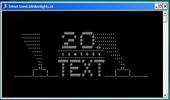With the advent of ultra portable laptops, optical drives are becoming a thing of the past. Although not having optical drives allows manufacturers to make lighter devices, it causes problems to users when they want to fresh install operating systems, as most of them are still available in the form of CDs, DVDs and downloadable ISOs. For users of these devices, an option is to use a flash drive to install the operating system of their choice.
Not surprisingly, there are also a few of us who prefer installing operating systems from flash drives for its faster speed. There are also certain situations in which you are forced to install the OS of your choice through a bootable drive (such as when your computer without an optical drive encounters problems).

With such a lot of users needing to create bootable USB flash drives, it appears imperative that OS manufacturers provide an inbuilt way to create them with each DVD and CD they provide. However, that is not the case with all operating system manufacturers.
In fact, most of the users are left hunting for third party applications that can create a bootable USB drive for their specific operating system. To add to a user's misery, the OS manufacturers that do provide an application for this make them OS specific and do not support ISOs and DVDs of other OSs. Additionally, some such applications fail to work even if the original ISO/DVD is slightly modified (slipstreamed etc.).
Rufus is small in size and claims to be faster at creating bootable USB drives than most applications of its type. Rufus is portable which means that you need not install this software to use it. Just double click on the executable file and the application will start working. Rufus also allows you to add fixes to use your bootable flash drives for older computers having BIOSs which do not support booting from them.
Strangely however, Rufus can only create bootable flash drives from ISOs meaning you need to have an ISO image of the CD or DVD of the OS of your choice.
I do not think this should be too much of a problem considering how easy it is to create ISOs from DVDs and CDs.
2) In the Boot Selection dropdown menu, select Disk or ISO image. Click on the Select button right to the Boot Selection menu to locate your ISO image.
3) You will not need to modify the Partition Scheme option and Target system type option as the default choices are suitable for making the USB drive work on most computers.
4) The name for your USB device will be displayed in the Volume label box. You need not modify the File System, cluster size and other preselected settings.
Do note that Rufus will format your USB drive deleting everything on it before making it bootable. So, make sure that it does not contain any important data.
5) Click on Start to format your USB drive and extract all files of the ISO to it. After some time, the progress bar will reach the end indicating successful execution.
To install the OS, restart your computer and select your USB device as the primary boot option in the BIOS boot menu if you have not already. Restart your computer again and then, follow the on screen instructions.
Compatibility
Rufus works on all latest versions of Windows and can be used to extract the following ISOs to a bootable USB drive:-
If you face any problem, you can write about it in the comments.
Not surprisingly, there are also a few of us who prefer installing operating systems from flash drives for its faster speed. There are also certain situations in which you are forced to install the OS of your choice through a bootable drive (such as when your computer without an optical drive encounters problems).

With such a lot of users needing to create bootable USB flash drives, it appears imperative that OS manufacturers provide an inbuilt way to create them with each DVD and CD they provide. However, that is not the case with all operating system manufacturers.
In fact, most of the users are left hunting for third party applications that can create a bootable USB drive for their specific operating system. To add to a user's misery, the OS manufacturers that do provide an application for this make them OS specific and do not support ISOs and DVDs of other OSs. Additionally, some such applications fail to work even if the original ISO/DVD is slightly modified (slipstreamed etc.).
Use Rufus to create bootable USB media
If you too are one such user looking for a solution, you can try Rufus, an open source tool to create bootable USB drives from almost any bootable ISO.Rufus is small in size and claims to be faster at creating bootable USB drives than most applications of its type. Rufus is portable which means that you need not install this software to use it. Just double click on the executable file and the application will start working. Rufus also allows you to add fixes to use your bootable flash drives for older computers having BIOSs which do not support booting from them.
Strangely however, Rufus can only create bootable flash drives from ISOs meaning you need to have an ISO image of the CD or DVD of the OS of your choice.
I do not think this should be too much of a problem considering how easy it is to create ISOs from DVDs and CDs.
How to use Rufus?
1) When you start Rufus, the first option that you will see is Device. It contains all your connected USB drives. If you plug in a USB drive after starting Rufus, the drive you have connected will shortly be available here. Select your preferred USB device from the Device dropdown menu.2) In the Boot Selection dropdown menu, select Disk or ISO image. Click on the Select button right to the Boot Selection menu to locate your ISO image.
3) You will not need to modify the Partition Scheme option and Target system type option as the default choices are suitable for making the USB drive work on most computers.
 |
| Older version of Rufus in Windows 8 |
4) The name for your USB device will be displayed in the Volume label box. You need not modify the File System, cluster size and other preselected settings.
Do note that Rufus will format your USB drive deleting everything on it before making it bootable. So, make sure that it does not contain any important data.
5) Click on Start to format your USB drive and extract all files of the ISO to it. After some time, the progress bar will reach the end indicating successful execution.
To install the OS, restart your computer and select your USB device as the primary boot option in the BIOS boot menu if you have not already. Restart your computer again and then, follow the on screen instructions.
Compatibility
Rufus works on all latest versions of Windows and can be used to extract the following ISOs to a bootable USB drive:-
Arch Linux, Archbang, BartPE/pebuilder, CentOS, Damn Small Linux, Debian, Fedora, FreeDOS, FreeNAS, Gentoo, GParted, gNewSense, Hiren's Boot CD, LiveXP, Knoppix, KolibriOS, Kubuntu, NT Password Registry Editor, Parted Magic, Partition Wizard, Raspbian, Linux Mint, OpenSUSE , ReactOS, Red Hat, rEFInd, Slackware, Tails, Trinity Rescue Kit, Ubuntu, Ultimate Boot CD, Windows XP (SP2, SP3), Windows Server 2003 R2, Windows Vista, Windows 7, Windows 8, Windows 8.1, Windows 10, Windows Server 2016, Windows Server 2019, Windows 11 and many more.
If you face any problem, you can write about it in the comments.

 About
About




Reader Comments
I must confess, you are very Good.
Hi!
Could not get it to install. I got the error message: No configuration file found.
No DEFAULT or UI configuration directive found!
Boot:
Yours Sincerely
William Griffiths
@William: Which OS are you trying to install?
It's not clear as to how to determine the file is complete. I thought mine was finished when I got the green restart mode listed above, yet I did not have the DONE indication below so I pressed start and I think it began the entire process all over again. You should provide specifics as to what you can expect to comfirm completion. It's been 3 hours and I still have a screen that doesn't say DONE. Does it go away after time, possibly I missed it.
If the Green restart mode appeared, it means that ISO file was successfully written on the USB. If there had been an error, Rufus would have reported it.
Thanks a lot for sharing this. Everything ran and worked as described. I am indeed grateful.